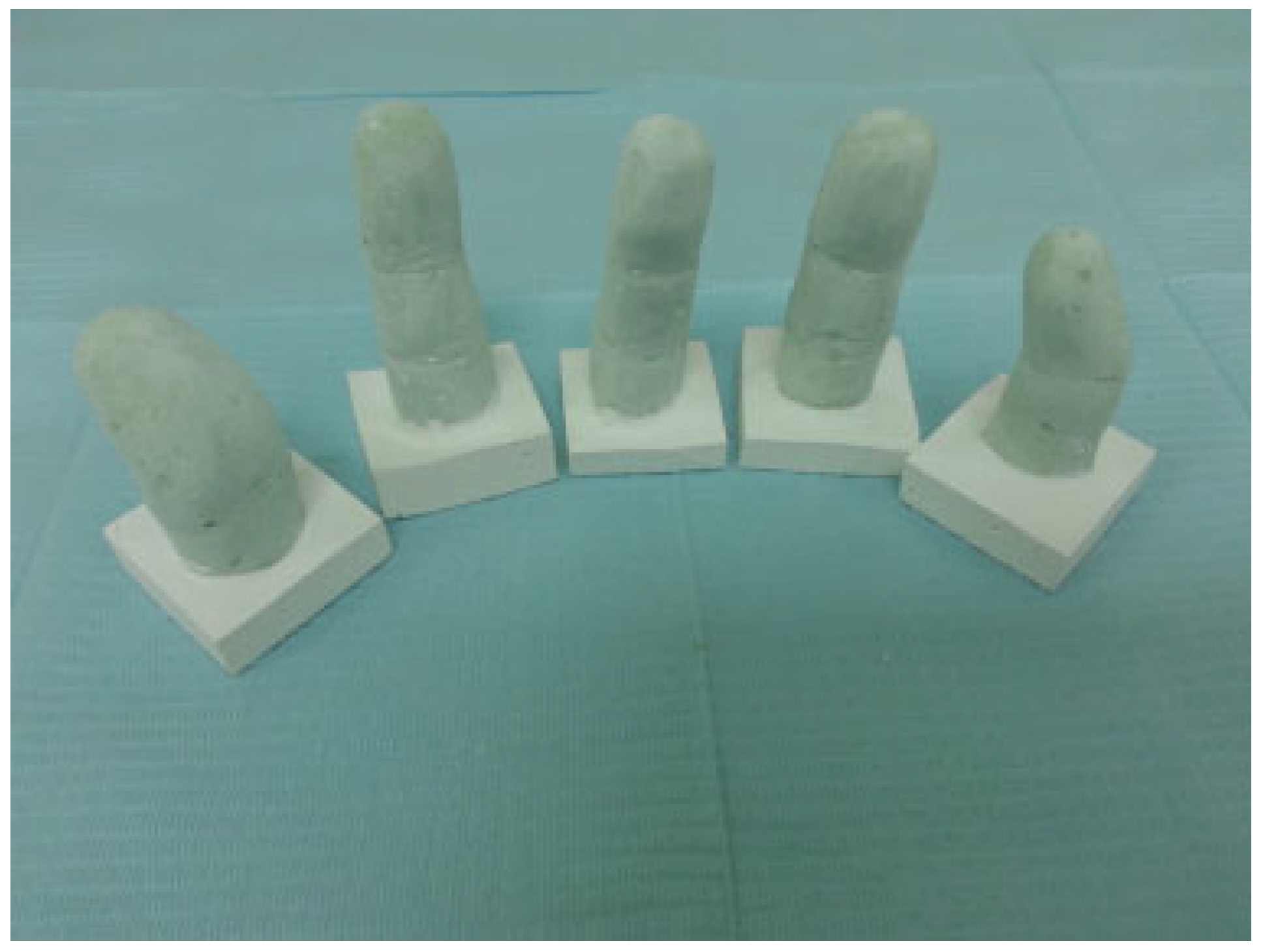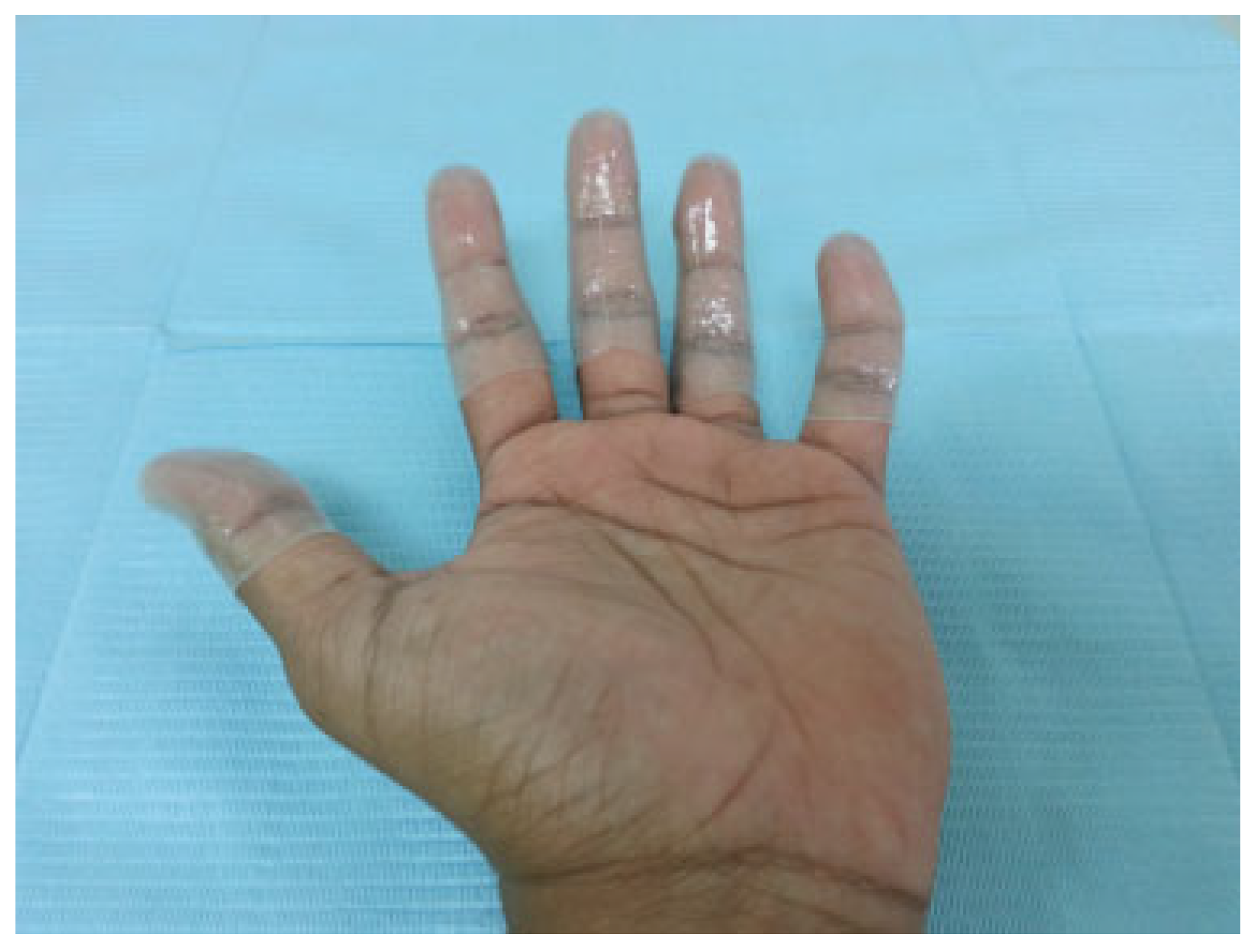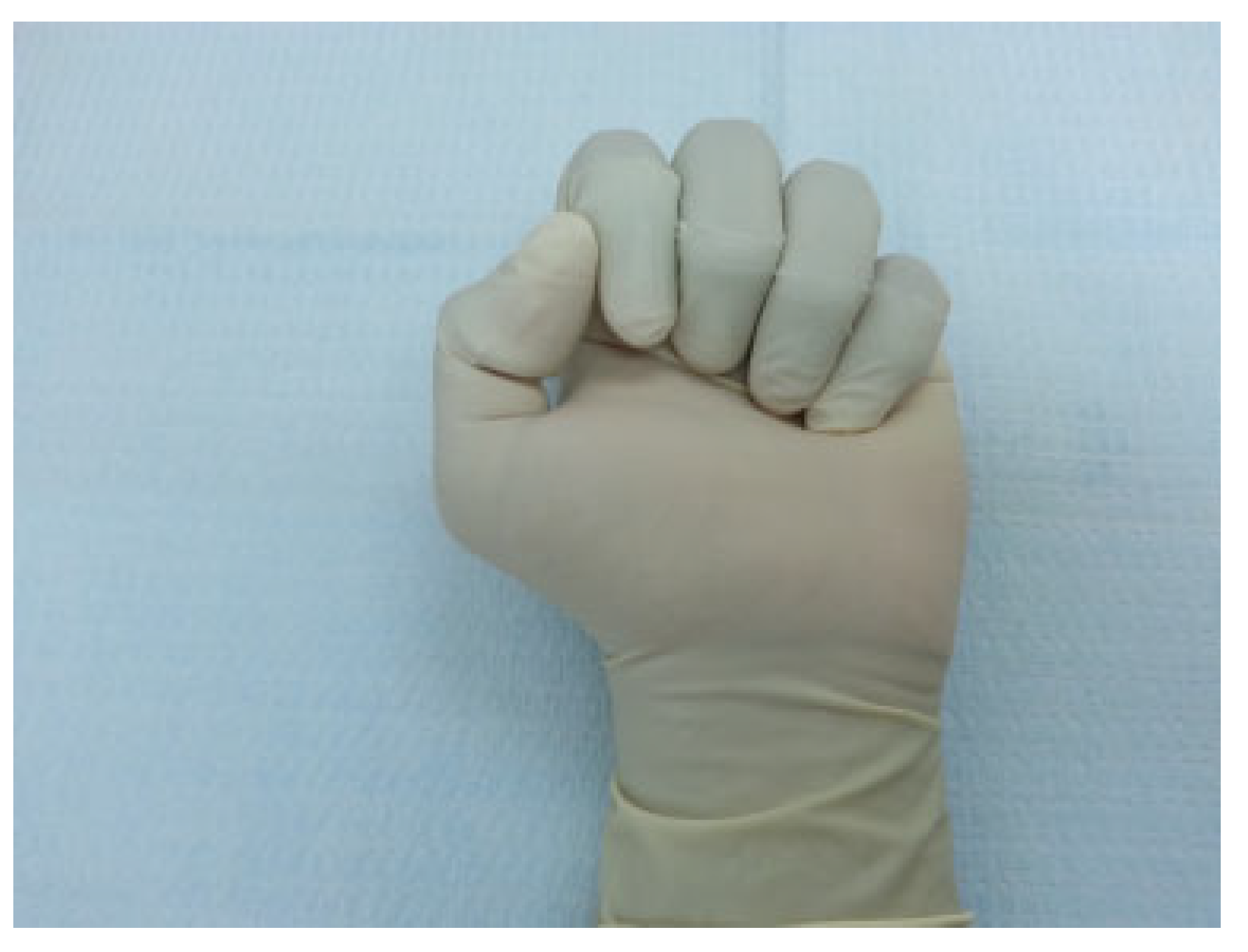Custom-Made Finger Guard to Prevent Wire-Stick Injury to the Operator's Finger While Performing Intermaxillary Fixation
Abstract
:Technique
Conclusion
Acknowledgments
References
- Ellis, E. Surgical Approaches to the Facial Skeleton, 2nd ed.; Lippincott Williams & Wilkins: Philadelphia, PA, USA, 2006; pp. 193–214. [Google Scholar]
- Kreutziger, K.L. Extended modified postauricular incision of the temporomandibular joint. Oral Surg Oral Med Oral Pathol 1987, 63, 2–8. [Google Scholar] [CrossRef] [PubMed]
- Kreutziger, K.L. Surgery of the temporomandibular joint. I. Surgical anatomy and surgical incisions. Oral Surg Oral Med Oral Pathol 1984, 58, 637–646. [Google Scholar] [CrossRef]
- Gulya, A.J. Glasscock-Shambaugh Surgery of the Ear, 6th ed.; Peoples Medical Publishing House: Shelton, CT, USA, 2010. [Google Scholar]




© 2013 by the author. The Author(s) 2013.
Share and Cite
Kumaresan, R.; Ponnusami, K.; Karthikeyan, P. Custom-Made Finger Guard to Prevent Wire-Stick Injury to the Operator's Finger While Performing Intermaxillary Fixation. Craniomaxillofac. Trauma Reconstr. 2014, 7, 327-329. https://doi.org/10.1055/s-0034-1378185
Kumaresan R, Ponnusami K, Karthikeyan P. Custom-Made Finger Guard to Prevent Wire-Stick Injury to the Operator's Finger While Performing Intermaxillary Fixation. Craniomaxillofacial Trauma & Reconstruction. 2014; 7(4):327-329. https://doi.org/10.1055/s-0034-1378185
Chicago/Turabian StyleKumaresan, Ramesh, Karthikeyan Ponnusami, and Priyadarshini Karthikeyan. 2014. "Custom-Made Finger Guard to Prevent Wire-Stick Injury to the Operator's Finger While Performing Intermaxillary Fixation" Craniomaxillofacial Trauma & Reconstruction 7, no. 4: 327-329. https://doi.org/10.1055/s-0034-1378185
APA StyleKumaresan, R., Ponnusami, K., & Karthikeyan, P. (2014). Custom-Made Finger Guard to Prevent Wire-Stick Injury to the Operator's Finger While Performing Intermaxillary Fixation. Craniomaxillofacial Trauma & Reconstruction, 7(4), 327-329. https://doi.org/10.1055/s-0034-1378185


